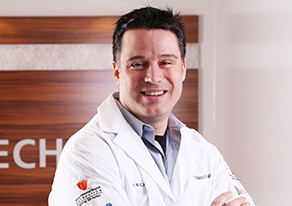Citizenship Canadian Field Neuroscientist | ||
 | ||
Books Neuropsychological Assessment of Receptive Language Comprehension with Event-related Brain Potentials [microform] Institutions | ||
Brain hope ryan d arcy tedxsfu
Ryan C.N. D'Arcy (born 1972) is a Canadian neuroscientist. He is a full professor at Simon Fraser University, where he holds the B.C. Leadership Chair in Multimodal Technology for Healthcare Innovations. He is also the head of Health Sciences and Innovation at Fraser Health's Surrey Memorial Hospital.
Contents
- Brain hope ryan d arcy tedxsfu
- Dr ryan d arcy bc leadership chair
- Early life and education
- Career
- Achievements
- Recovery of Captain Trevor Greene The Iron Soldier
- Awards
- Selected publications
- References
D'Arcy is a proponent of new neurotechnologies and neuroimaging applications that have helped many patients achieve recoveries that would have previously been impossible; for example patients apparently locked in a vegetative state, but whose brain vital signs indicate consciousness. He has founded two of Canada's largest neuroscience technology clusters, one in Halifax, Nova Scotia (formed in 2002) and the other in Surrey, British Columbia (formed in 2012). Each is in or adjacent to a major hospital. His work has attracted more than $80 million in funding.
A September 17, 2015 press conference featuring one of D'Arcy's outcome successes was selected by Global News as one of 2015's events of the year, generating awareness and funding that has helped the development of several organizations.
Dr ryan d arcy bc leadership chair
Early life and education
Born and raised in Williams Lake, British Columbia, D'Arcy attended Brentwood College School, on Vancouver Island, graduating in 1990. He earned a B.Sc. from the University of Victoria in 1996, an M.Sc. in neuropsychology in 1998 under Catherine A. Mateer, and a Ph.D. in neuroscience in 2002 from Dalhousie University under John Connolly and Kazue Semba. In 2001 he was recruited for a Research Associate/Postdoctoral Fellowship in Magnetic Resonance Imaging Physics at the National Research Council's Institute for Biodiagnostics.
Career
In 2002, D'Arcy returned to Halifax, where he created the National Research Council's Institute for Biodiagnostics (Atlantic). He developed and led the Institute over a decade, which has since successfully transitioned into its current form, BIOTIC.
D'Arcy is a full professor at Simon Fraser University, where he holds the B.C. Leadership Chair in Multimodal Technology for Healthcare Innovations and is also the head of Health Sciences and Innovation at Fraser Health's Surrey Memorial Hospital.
Throughout his career, D'Arcy has been embedded within clinical acute and long-term care environments, where he has applied advanced neuroimaging and neurotechnologies for diagnosis, evaluation and monitoring of brain function.
Achievements
D'Arcy has developed a framework for objective physiological measurement of brain function that does not rely on behavioural responses. In 2013 he coined the term "brain vital signs" for this.
D'Arcy's earlier work in the area of brain vital signs led to the development of the Halifax Consciousness Scanner (HCS) for brain status evaluation while he was the Head and Senior Research Officer of the National Research Council 's Institute for Biodiagnostics (Atlantic Region). The technology concept behind the Halifax Consciousness Scanner has received numerous awards, including a 2015 Wall Street Journal Award to Mindful Scientific, Inc. for Global Startup of the Year.
With neuroscientist and neurosurgeon David B. Clarke, D'Arcy led the first successful use of a brain surgery simulation and rehearsal tool to remove a brain tumour. D'Arcy and Clarke were principal developers on the Canadian national team that developed the original technology and approach behind NeuroTouch, a virtual reality simulator with force feedback incorporating numerous surgical tools. Developed in 2008 as part of the National Research Council, NeuroTouch enables surgeons and students to rehearse patient-specific surgeries in a safe computer-generated environment using footage acquired during actual surgical procedures.
In 2013, D'Arcy and Clarke teamed up with Conquer Mobile to develop PeriopSim, a suite of advanced portable surgical simulation training tools being used around the world.
D'Arcy has developed a brain imaging framework specific to the monitoring of neuroplasticity-related indicators.
Since the early 1990s, brain grey matter has been studied using functional MRI. Although white matter accounts for nearly 50% of the brain's tissue, it has not been studied to the same extent. Recent technological advances in equipment have made it possible to detect white matter activation within new thresholds. Over a ten-year period of systematic studies, Dr. D'Arcy and his team proved that white matter activation can be studied using advanced functional MRI. This new discovery opens up fundamental improvements in understanding brain connectivity in distributed neural networks, knowledge that has been used to advance understanding of white matter dysfunction in neurological conditions such as multiple sclerosis and Alzheimer's.
Recovery of Captain Trevor Greene, "The Iron Soldier"
D'Arcy is perhaps best known through his work with Captain Trevor Greene (ret.), a former Canadian soldier who suffered a traumatic brain injury when struck in the head with a crude axe while serving in Afghanistan. He was in a coma, and his prognosis for recovery was thought to be poor. D'Arcy successfully treated him. At an event on September 17, 2015, Greene walked in front of a live audience for the first time. D'Arcy and Greene revealed future plans that include a trip to the basecamp of Mount Everest.
Awards
D'Arcy has been awarded a Public Service Award of Excellence, The National Research Council's Research Breakthrough of the Year, and the Discovery Award for Innovation.
Selected publications
D'Arcy has more than 170 published works, including 60 papers, chapters and patents.
